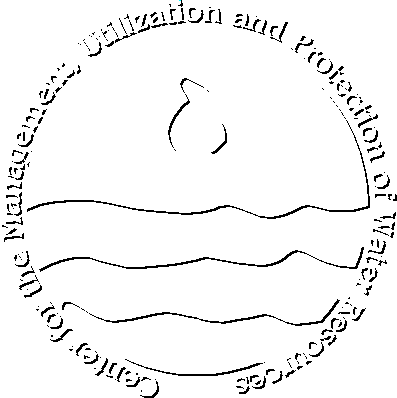Center for Management,
Utilization and Protection of Water Resources


|
Mission Statement
|
|
The Center for the Management, Utilization and Protection of Water
Resources at
Tennessee Technological University was created in 1984 to mobilize
an interdisciplinary
professional staff to address the increasing demands on water
resources in Tennessee, the
surrounding region and the nation. This mission is accomplished
through research,
education and public service.
|
Goals and Objectives
|
|
- To mold existing and expanding water resources expertise into
an interactive unit,
providing educational benefits to the citizens of the region.
- To address the diverse problems associated with the growth of
water use in the
region through the Water Center's research and public service
missions.
- To provide technical assistance to federal, state and local
government agencies and
industries in addressing issues of water use and resource
protection.
- To attract well-known water resource professionals to a
nationally recognized Center
of Excellence in Tennessee.
- To disseminate useful information regarding water resources.
- To promote the expansion of industry in the region and the
state by providing ser-
vices related to water use, determination of available water
supplies and wastewater
disposal.
|
Introduction
|
| Researchers at the Center for the
Management, Utilization and Protection of Water
Resources (Water Center) at Tennessee Tech have historically delved
into the complex
issues affecting our most precious, finite, natural treasure:
water. Throughout the history
of the center, the water research performed by Water Center
associates has investigated
public health issues and threats to ecosystems that occur not only
in Tennessee and the
Southeast, but throughout the world.
The Water Center's commitment to protecting this life-sustaining
resource ranges from
isolation of water-borne disease; to development of analytical
methods for limiting
transmission of chemical and microbial threats to human, animal and
aquatic life; to
collection of data about endangered species that rely on aquatic
environments for sur-
vival. The center is further committed to safeguarding ground and
surface waters from
solid and hazardous waste contamination and educating the public
about best environ-
mental practices to protect water supplies. |
Interdisciplinary Team
Approach
|
| The Water Center was created to
organize interdisciplinary teams of professionals to
investigate and seek obtainable solutions to environmental and
water resource problems
facing our state, nation and world. Core Water Center research
faculty includes profes-
sionals in chemistry, soil science, microbiology, fisheries biology
and environmental
engineering. The vast expertise of faculty from the on-campus U.S.
Biological Service
Fisheries Unit, the departments of biology, chemistry, agriculture,
civil engineering,
chemical engineering, mechanical engineering, and the College of
Education is also
drawn upon to form research teams. This ability to streamline
formation of research
teams enables faculty to respond competitively to requests for
research funding
proposals. |
|  |
PROTECTING WATER SUPPLIES -
Water
Center researchers delve into a broad range of interdisciplinary
approaches to safe-guarding ground and surface water supplies.
|
Cooperation with State, Federal and
Municipal Agencies
|
| One of the Water Center's primary
strengths is successfully combining facilities and
services with state, federal and municipal agencies' resources to
achieve common re-
search objectives and reduce costs. Since the establishment of the
Water Center in 1984,
researchers have participated in numerous projects with state,
federal and municipal
agencies. Center researchers' historical involvement with multiyear
biodiversity studies,
fisheries research, wetlands projects and economic development
using geographical
information system (GIS) technology attests to the center's
reputation for working coop-
eratively against threats to our nation's watersheds.
These cooperative working relationships create new research and
funding opportunities,
and contribute to the center's stability while enabling the center
to pursue its mission of
service to the state and the region.
|
Student Involvement
|
| Primary to the Water Center's and
university's missions is the education of its students.
Students from across the nation and numerous countries worldwide
with undergraduate
backgrounds in science, engineering and agriculture seek graduate
opportunities through
the Water Center. This hands-on research experience is in steady
demand in the job
market because of growing national and global concern over
protection of our natural
resources and the environment.
Because of the interdisciplinary nature of its research, the Water
Center attracts students
and interns from nearly every college on campus. In its first 10
years of operation, the
Water Center has provided employment opportunities and financial
support to approxi-
mately 670 graduate students and 510 undergraduate students.
By providing these valuable educational opportunities to students
in both fundamental
research and the applied sciences, the Water Center further serves
the state and nation as
these students graduate and bring their environmental expertise
with them to their careers
and communities. |
Conclusion
|
| In the Water Center's next decade of
operation, cooperative research projects with mu-
nicipal, state and federal agencies will continue, and
collaborative relationships with
industry to find innovative solutions to environmental problems
will be actively sought.
Water Center researchers will also continue to pursue novel
approaches for enhancing the
habitat and abundance of fish and mussel species in the region
while simultaneously
protecting the long-term recreational attraction to the state.
Development of innovative
control methods to limit the transmission of chemical and microbial
substances threaten-
ing aquatic and human life will also continue.
There is no one resource more necessary to the preservation of our
environment, the plant
and animal life it supports, and quality of life - than
water.
|


|

